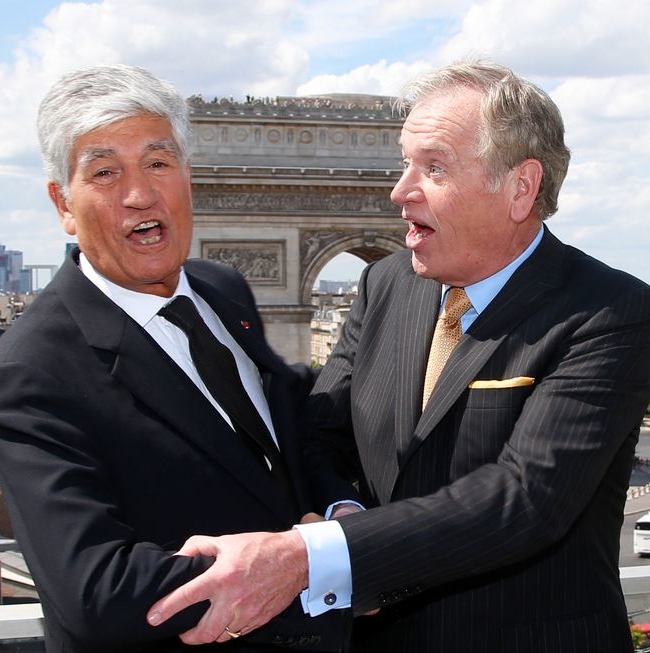The couple looked so happy after the big day.
Now as the “sausage making” behind the Omnicom/Publicis merger makes its way to public view, you might want to close your eyes.
It’s not pretty.
The Wall Street Journal reported on Friday that “battles over power and position” threaten to torpedo the merger. Sounds like the elements of a Shakespearean tragedy minus everyone dying at the end.
In my Big-Gulp analysis last year, I questioned how the transaction would benefit current and prospective clients. Now we learn from the Journal that the companies are fighting over who will be – this is rich – the acquirer and who will be the acquiree.
I can imagine the dialogue between the heads of Publicis and Omnicom, Maurice Levy and John Wren going something like this:
Levy: Even though we are absolutely a merger of equals, we still must designate an acquirer and acquiree for accounting purposes.
Wren: That’s bullshit. Excuse my French.
Levy: Actually, that’s an American word. In French, we would use the word “conneries” to express such a point of view.
Wren: You know what I mean
Levy: Actually I don’t. Because during negotiations you called this issue– hold on and let me pull out my notes so I can be precise. Right. You called this a “minor and inconsequential detail.”
Wren: C’mon Maurice.
Levy: Don’t you “C’mon me.” Since it’s minor and inconsequential, what is the harm in Publicis being the acquirer?
Wren: Because the public will then perceive that we’re not a merger of equals and that Omnicom is subservient to Publicis.
Levy: John, we have 130,000 of the smartest communicators in the world. Certainly, we can pull together a small team of say, 80 people to ensure the “merger of equals” message doesn’t get lost in what we both agree is nothing more than a technicality.
Wren: Hmmm.
Levy: Let’s turn this into a team-building exercise. We’ll take 40 staffers each from Publicis and Omnicom. Think about it. We have a task force of equals figuring out how to communicate a merger of equals. The symmetry is beautiful.
Wren: But who will be in charge of the task force?
Levy: We’ll have co-leaders, again showing the world that …
Fellas, did you consider that this “little” detail might need closure before signing off?
And I guess the investment bankers didn’t want to force the issue for fear of losing their tidy piece of change for the transaction.
To understand the mentality at Publicis, check out the Wikipedia page for “Publicis Omnicom Group” which went live on July 28, 2013, the day the merger was announced (obviously, didn’t get the memo that Wikipedia frowns on commercial use). In the organization’s capsule that I’ve captured below, skip to the “key people” section.

One doesn’t need a PhD in behavioral psychology to notice Publicis lands two people on the key-people list compared to Omnicom’s one. I smell trouble.
Given that this issue has lingered for eight months, we can assume whoever does becomes the acquirer will have coughed up some concessions to melt the stalemate.
A few comments on the recent media coverage:
- WPP CEO Martin Sorrell knows how to pile on in this case with a pithy sound bite: “You have one talking Chinese and the other Japanese.”
- Nothing good ever comes from a CEO saying “there is no Plan B.”
- It irks me that journalists continue to call Omnicom and Publicis “advertising firms.” If you compared service revenue for advertising and communications (PR+) from the two companies stripping away paid media, that massive revenue gap disappears.
Looking to the future, there must be at least one media training module between Publicis and Omnicom to get both entities on the same page.
We’ll see.




